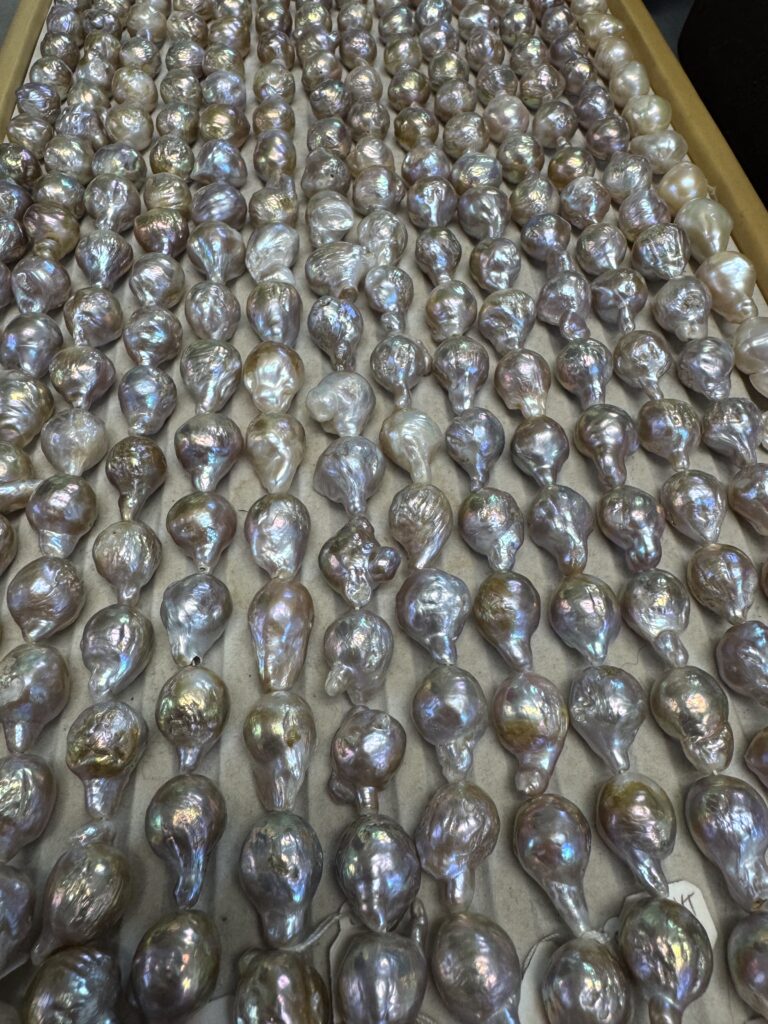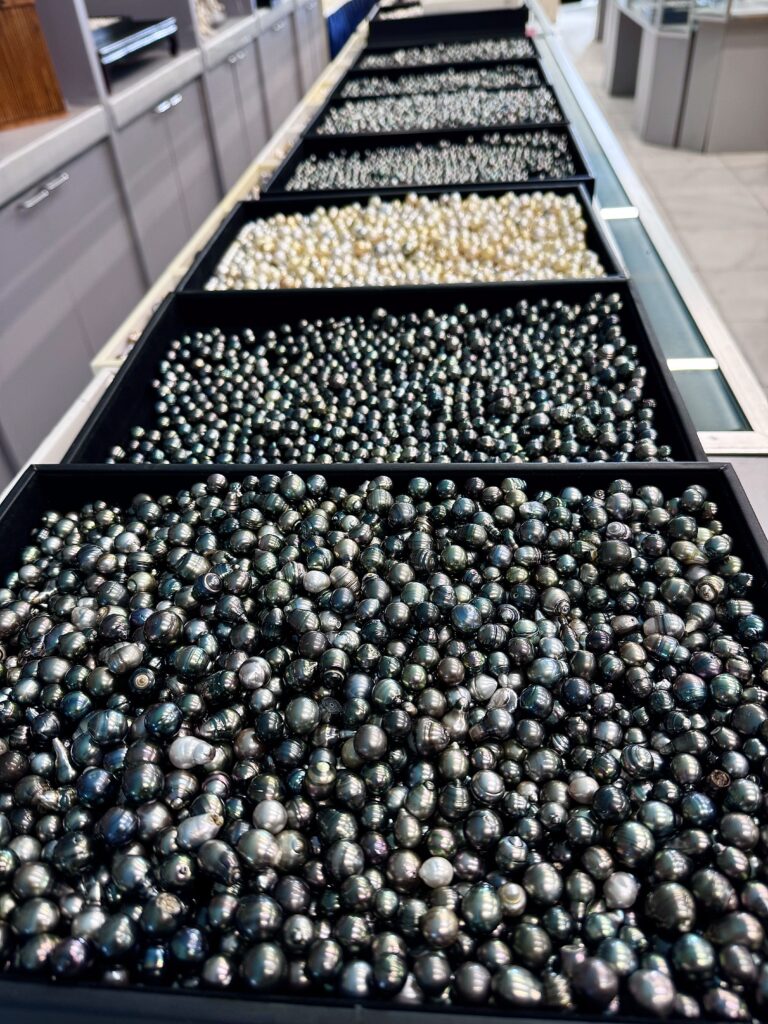


When it comes to custom jewelry, every element matters. Elegant, versatile, and rich in history, pearls offer a unique opportunity to elevate your design with texture, luster, and story. Whether you’re a jewelry designer curating your next collection or a shopper looking to create a meaningful custom piece, understanding which pearl types work best is the key to getting it just right.
At United States Pearl, we help clients find the right pearls for their style, purpose, and vision. Here’s your guide to identifying the best pearl types for custom jewelry—and how to choose them with confidence.
Start with the Basics: The 5 Main Pearl Types
Before diving into design, it’s important to know the five primary types of cultured pearls commonly used in jewelry. Each one varies in origin, shape, size, color, and price point.
1. Freshwater Pearls
Where they’re from: Lakes and rivers, mostly in China
Why they work: Affordable, versatile, and available in a wide variety of shapes and colors
Best for: Everyday pieces, bridal jewelry, layering strands, and modern minimalist styles
Freshwater pearls are ideal for clients looking for elegant pieces without breaking the bank. They’re perfect for casual jewelry or layered looks and offer great variety for designers.
2. Akoya Pearls
Where they’re from: Primarily Japan
Why they work: Classic round shape, bright mirror-like luster
Best for: Timeless earrings, solitaire pendants, and traditional bridal pieces
If your custom design leans classic or leans toward vintage glamour, Akoya pearls are a go-to. Their perfectly round form and clean white or cream tones give off that unmistakable “old money” elegance.
3. Tahitian Pearls
Where they’re from: French Polynesia
Why they work: Naturally dark tones (black, grey, green, peacock), larger sizes
Best for: Statement rings, edgy designs, bold necklaces, and unisex jewelry
Tahitian pearls are dramatic and luxurious. Their deep, iridescent tones make them perfect for contemporary or gender-neutral custom pieces with high visual impact.
4. South Sea Pearls
Where they’re from: Australia, Indonesia, the Philippines
Why they work: Large sizes, satin luster, rare golden and white hues
Best for: High-end heirloom jewelry, luxury clients, statement pendants
South Sea pearls are some of the most valuable and stunning on the market. Their size and silky glow make them ideal for designs where a single pearl can carry the entire look.
5. Baroque Pearls
Where they’re from: Found across all pearl types
Why they work: Irregular, artistic shapes and organic texture
Best for: One-of-a-kind pieces, asymmetrical designs, fashion-forward clients
Baroque pearls are growing in popularity thanks to their uniqueness and movement. If your client wants something unexpected or art-inspired, baroque pearls open up creative freedom.
What to Consider When Choosing Pearls for Custom Jewelry
Even once you’ve selected a pearl type, there are several important features to evaluate to ensure you’re choosing the best quality for your piece:
1. Luster
Luster is the brightness and reflective quality of a pearl. The higher the luster, the more “glow” your jewelry will have. This is especially important for simpler designs where the pearl is the focal point.
2. Shape
Perfectly round pearls are often the most traditional—and most expensive. But oval, button, drop, and baroque shapes can be even more beautiful depending on the design. Asymmetry often adds personality.
3. Surface Quality
Small blemishes or ridges are common and can add character, but for clean, polished designs, you’ll want pearls with minimal imperfections. These are especially important for rings or stud earrings where the pearl is constantly visible.
4. Color
From classic white and soft pink to silver, gold, and deep black, pearl color can dramatically influence the tone of a piece. Think about the metal you’ll use and the skin tone or personal style of your client when choosing.
5. Size
Bigger doesn’t always mean better—but it definitely makes a statement. Consider where the pearl will sit in the design. Earrings and rings often look best with 6–9mm pearls, while pendants and strands can go much larger.
Design Ideas by Pearl Type
If you’re not sure where to begin, here are a few popular custom design ideas and the pearls that fit them best:
Classic Stud Earrings: 7mm Akoya pearls in white or cream with yellow or white gold
Bold Statement Ring: Single Tahitian pearl (10mm+) set in a chunky gold or silver band
Minimalist Pendant: Drop-shaped freshwater or baroque pearl on a delicate chain
Modern Heirloom Necklace: Golden South Sea pearl on a sleek satin or rope chain
Asymmetrical Dangle Earrings: Mixed baroque freshwater pearls for an artful twist
Custom jewelry is all about creating something meaningful, personal, and long-lasting. Choosing the right pearl is more than a design choice—it’s a way to give your piece emotion, elegance, and character.
At United States Pearl, we’re here to help you find the perfect pearls for your next custom piece—whether it’s a bridal gift, a personal investment, or a design for a client. From selecting the best pearl type to matching size, color, and luster, we’ll work with you every step of the way.
Need help sourcing the right pearls?
👉 Contact us for custom pearl selection support: https://unitedstatespearl.net/contact-us/